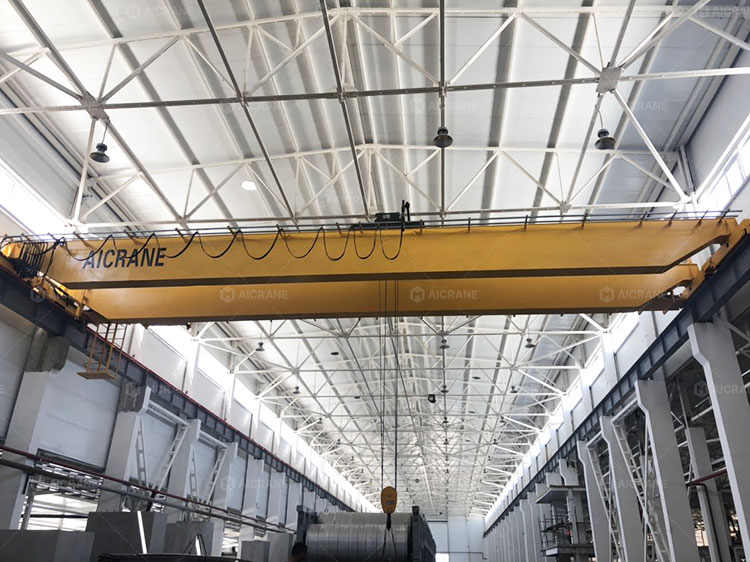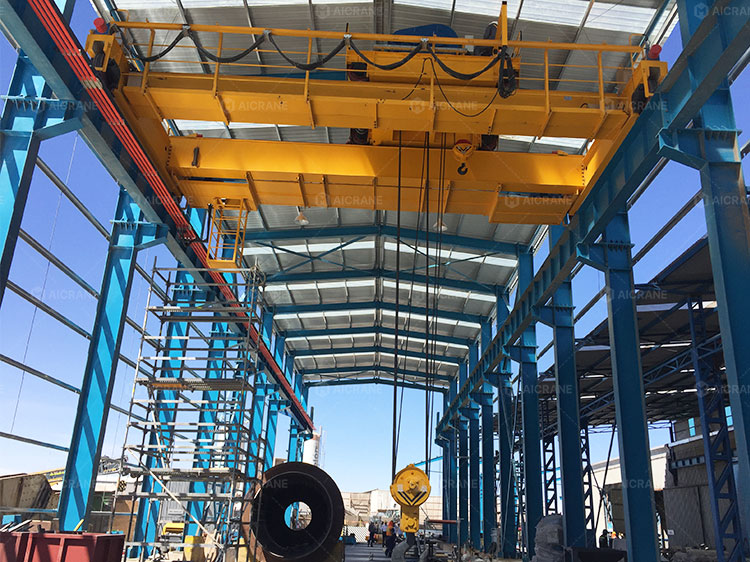Double girder overhead cranes have become an integral part of modern industrial operations due to their high load capacity, versatility, and ability to span large distances. These cranes are widely used in facilities where heavy lifting and precise material handling are required. As industries expand their production capabilities and embrace automation, the demand for double girder overhead cranes continues to rise. This article explores the key industries driving this demand and examines why these sectors rely heavily on such cranes.

1. Steel and Metal Production Industry
The steel and metal industry is one of the largest consumers of double girder bridge cranes. These cranes are indispensable in steel mills, metal processing plants, and foundries where extremely heavy and bulky materials need to be lifted and moved.
-
Heavy Load Handling: Double girder overhead cranes offer lifting capacities that often exceed 100 tons, making them ideal for transporting molten metal ladles, steel coils, and large billets.
-
High-Temperature Environments: Steel production involves intense heat, and cranes are often used above furnaces or casting areas. Double girder designs are robust and can handle such challenging environments.
-
Continuous Operations: Steel mills typically run 24/7, which means cranes must be reliable and durable. Advanced double girder systems offer enhanced stability, reducing downtime and operational risks.
With global steel production steadily increasing to meet construction and manufacturing needs, the demand for these cranes in this sector remains strong.
2. Automotive and Heavy Machinery Manufacturing
The automotive industry and heavy machinery manufacturing sectors require precision and efficiency during the assembly and movement of large components. Double girder overhead cranes play a crucial role in supporting these needs.
-
Precision Lifting: Automotive assembly lines need cranes that can handle engines, chassis frames, and tooling with high accuracy. Double girder designs offer superior stability and positioning accuracy.
-
High Productivity: Manufacturers must maintain fast-paced operations to meet market demands. Double girder eot cranes can span large work areas, enabling smooth material flow without obstructing production.
-
Flexibility: The cranes can be equipped with specialized lifting attachments such as spreader beams, magnets, or vacuum lifters, making them versatile for handling a wide range of automotive and heavy equipment components.
As vehicle production and the manufacturing of large agricultural and construction machinery expand globally, these industries are significantly fueling crane demand.

3. Power Generation and Energy Sector
The energy sector, including power plants and renewable energy facilities, depends heavily on double girder overhead cranes for the installation, maintenance, and handling of massive equipment.
-
Large Component Handling: Power plants often deal with heavy turbines, generators, and transformers that can weigh hundreds of tons. Double girder cranes can safely manage such loads.
-
Construction of Energy Facilities: Building hydroelectric dams, nuclear plants, and wind turbine assembly sites requires cranes capable of lifting oversized parts during construction and repair.
-
Maintenance Needs: Regular maintenance of power plants demands overhead cranes for lifting components to access hard-to-reach areas, making reliability a top priority.
The rise of renewable energy projects, such as offshore wind farms and large-scale solar plants, has further boosted the demand for robust lifting solutions in this sector.
4. Mining and Mineral Processing
Mining operations involve the extraction and processing of heavy raw materials, making double girder overhead cranes a necessity.
-
Ore and Material Handling: Cranes are used for moving raw ore, processed minerals, and heavy machinery in mining facilities and mineral processing plants.
-
Maintenance of Mining Equipment: Mining trucks, crushers, and conveyor systems are massive and require cranes for repairs and overhauls.
-
Durability in Harsh Conditions: Mining environments are often dusty, humid, and subject to extreme weather. Double girder overhead cranes are engineered to withstand these conditions.
With increasing global demand for minerals and rare earth elements critical for technology and infrastructure, mining companies continue to invest in durable and high-capacity cranes.
5. Shipbuilding and Marine Industry
The shipbuilding industry is another major driver of double girder overhead crane demand due to the massive scale of components used in vessel construction.
-
Large Module Assembly: Shipyards use cranes to lift hull sections, engines, and other large modules during ship construction.
-
Yard Operations: Double girder overhead cranes are installed in workshops and dry docks to move heavy steel plates and prefabricated sections.
-
Safety and Efficiency: Given the size of ships and the complexity of assembly processes, these cranes ensure safe and efficient lifting operations.
As global maritime trade continues to grow and new shipyards emerge in Asia and Europe, shipbuilders are heavily investing in advanced crane systems.
6. Aerospace and Aviation Industry
The aerospace industry requires high-precision lifting equipment for handling expensive and delicate components. Double girder overhead cranes meet these needs with their superior stability and load control.
-
Aircraft Assembly: Aircraft wings, fuselage sections, and engines are large and require precise positioning during assembly.
-
Maintenance Facilities: Cranes are used in hangars and maintenance facilities to lift engines and other aircraft parts for servicing.
-
Material Handling: From composites to heavy metal parts, cranes facilitate the movement of diverse materials used in aircraft manufacturing.
With commercial aviation recovering post-pandemic and new defense projects underway, the aerospace industry’s investment in overhead cranes continues to rise.
7. Logistics, Warehousing, and Ports
Logistics and port operations involve moving large cargo volumes daily, and double girder overhead cranes provide the required efficiency and strength.
-
Container Handling: Ports use cranes to handle containers, steel cargo, and heavy project shipments.
-
Warehouse Operations: Large warehouses and distribution centers rely on warehouse overhead cranes to store and retrieve heavy goods quickly.
-
Intermodal Facilities: In rail yards and freight terminals, double girder cranes help transfer heavy loads between transport modes.
The growth of global e-commerce and international trade has placed additional pressure on logistics operators to invest in advanced crane systems.
Why These Industries Prefer Double Girder Overhead Cranes
Several common factors explain why these industries choose double girder overhead cranes:
-
Higher Load Capacity: They can handle extremely heavy loads compared to single girder designs.
-
Larger Spans: Double girder cranes can cover greater distances, ideal for large industrial facilities.
-
Enhanced Durability: The design is robust and can withstand harsh operating conditions.
-
Flexibility: They can accommodate specialized lifting attachments for diverse applications.
-
Precision: These cranes provide accurate load positioning, essential in industries like aerospace and automotive.
Market Outlook
As industrialization accelerates in emerging economies and existing facilities upgrade to more advanced material handling systems, the demand for double girder overhead cranes is expected to grow steadily. Automation, remote monitoring technologies, and energy-efficient designs are further enhancing the value of these cranes across all industries.
Conclusion
Double girder overhead cranes are indispensable across multiple industries, from steel production and automotive manufacturing to shipbuilding and power generation. These sectors drive demand because they require reliable, high-capacity lifting solutions to manage complex operations. As global supply chains expand and infrastructure projects increase, the role of double girder overhead cranes in enabling safe and efficient material handling will only become more critical. Businesses investing in these cranes can expect improved productivity, enhanced safety, and a strong return on investment in the long term.
